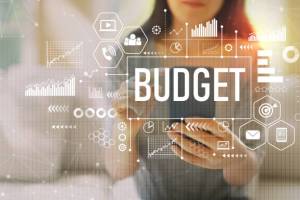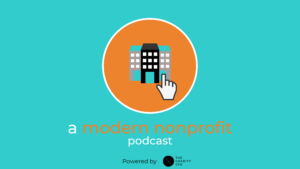Taking Control of Your Nonprofit Finances
Today, you might feel there are few things you have control over. Fortunately, taking control of your nonprofit finances is not one of them.
Since the novel COVID-19 pandemic has forced the world into a remote economy, nonprofits face a time of financial transition.
91% of global nonprofit organizations suffered operational damage in the crisis. This 91% is an improvement from the 96.5% recorded in March.
Waiting for normalcy is only a long-term solution that many organizations can’t afford. However, learning how to transition into a new normal can help your organization get back on its feet.
Understanding how to manage your finances is the best path to regaining stability. Here’s how you can start taking control of your nonprofit finances sensibly and effectively.

Taking Control of Your Nonprofit Finances
It’s important to consider how money transfers through different hands within your organization.
A board of directors should oversee general operations. An added financial branch of operation can still go a long way. Delegate financial tasks to a specific individual or group of individuals. That way, you centralize the information handled in the accounting process.
Along with financial managers, you can outsource your accounting tasks. Getting professional advice is a much more efficient way to get your finances in order.
Nonprofits that manage finances internally can appoint at least 2 or 3 people to manage. They can be direct points of contact between the organization and the finances.
You can also assign different functions to those in your financial branch. One member can manage executive functions while supporting members manage secondary tasks. This structure promotes organization, accountability, and transparency within your financial branch of operation.
Multiple Streams of Funding
Adding more streams of funding to your organization is essential to financial balance. Receiving support from more than a few sources adds to the revenue to collect.
It also adds more financial security. Instead of relying on one funding source, you open up more opportunities.
Collective revenue from various sources adds up and gives you more stability. If one stream dries up, you’ll still have the flexibility to focus on others in times of need.
Relevant Streams of Funding
While you grow more streams of funding, you should also make your sources relevant to the times. Prior to the pandemic, common sources of funding for nonprofits included:
- Sponsorships
- Grants
- Programs tuition
- Fundraising Events
- Donations
- Subscriptions
Nonprofits that focus more on in-person fundraising should consider more reliable funding sources.
Instead, there are more reliable, contactless methods of funding. These include sponsorships, grants, donations, and subscriptions.
Sponsorships and grants often involve some research and individual outreach. The scope of their awarding processes also requires waiting periods and gaps. Still, they’re useful sources to consider for long-term operations.
Tracking Expenses and Profits for Taking Control of Your Nonprofit Finances
Multiple streams of funding ensure that money flows into the organization.
This is a two-way stream. It’s possible for cash to flow out of an organization at a high rate.
Tracking the expenses shows you funds entering and exiting the budget. Your financial branch tracks expenses and two-way cash flow. The board of directors advises the active spending goals and habits.
The board and financial managers should meet on a regular basis. Your budget and the size of your organization should determine how often you meet.
It’s also helpful to automate some of the tracking process through software. You can use tools like Quickbooks or GetApp. Tools like these will allow you to begin taking control of your nonprofit finances.
These have specialized features for nonprofit organizations. They can also help you with the distinction between nonprofit and commercial operations. Many softwares also include tax forms and documents. You can use these to help your organization with legal compliance guidelines.
Basic Budgeting
Your organization should use budgeting to inform the other areas of financial management. Here are two basic budgeting tips to follow.
Budget Structures
Each nonprofit should have monetary goals relative to their operational goals. There are three main budgeting structures every nonprofit should know:
- Surplus budget
- Balanced budget
- Deficit budget
These structures are often used in government or commercial spending. They’re useful guidelines to help you estimate profit margins and losses.
When your fundraising efforts exceed expectations, you have a surplus budget.
A balanced budget indicates the expenses are expected to meet profits. In contrast, a deficit budget means that expenses exceed profits. So, there’ll be a margin of lost funds to recover.
Your total budget operates within these structures. As you continue to fundraise, you can determine which type of budget your organization currently operates on.
Budget Timelines
A budget should also include a realistic timeline for specific goals. Be sure to include important landmarks in the year where you need to measure performance.
You can split the fiscal and calendar years into quarters to make goals more realistic. Then expand to an annual timeline to measure more long-term growth.
Board meetings should also align with your timeline of goals. Or, you can increase their frequency to keep up with constant changes.
Taking Control of Your Nonprofit Finances: Outlining Policies
The most important step in financial management is documentation. This includes recording tangible copies of your budget, funding sources, and financial goals.
However, you should also consider implementing or updating your operational policies. This includes spending and investment policies.
Updating your policies may crossover with budgeting. Typically, a budget tends to represent your organization in numbers. A policy shows the larger investment potential.
The content in your policy may also intersect with legal guidelines. For nonprofits, these guidelines often determine eligibility for certain funding opportunities or methods.
Manage Your Nonprofit Finances Now
Financial health is an essential part of any nonprofit organization. We can show your organization how to weather the storm and become financially resilient.
With our team of experts, you can get professional accounting and bookkeeping services. We’ll tailor your financial services to the needs of your organization.
To begin taking control of your nonprofit finances today, contact us, and request a meeting.


 “While paving my path and finding my footing in life, I have found my true purpose of helping nonprofit organizations do the same,” said Tosha. “Through this podcast, the ability to connect and help so many individuals will only grow, which will make the nonprofit community as a whole stronger. I am looking forward to bringing on industry leaders and participating in conversations that will help my listeners evolve their nonprofits.”
“While paving my path and finding my footing in life, I have found my true purpose of helping nonprofit organizations do the same,” said Tosha. “Through this podcast, the ability to connect and help so many individuals will only grow, which will make the nonprofit community as a whole stronger. I am looking forward to bringing on industry leaders and participating in conversations that will help my listeners evolve their nonprofits.”







